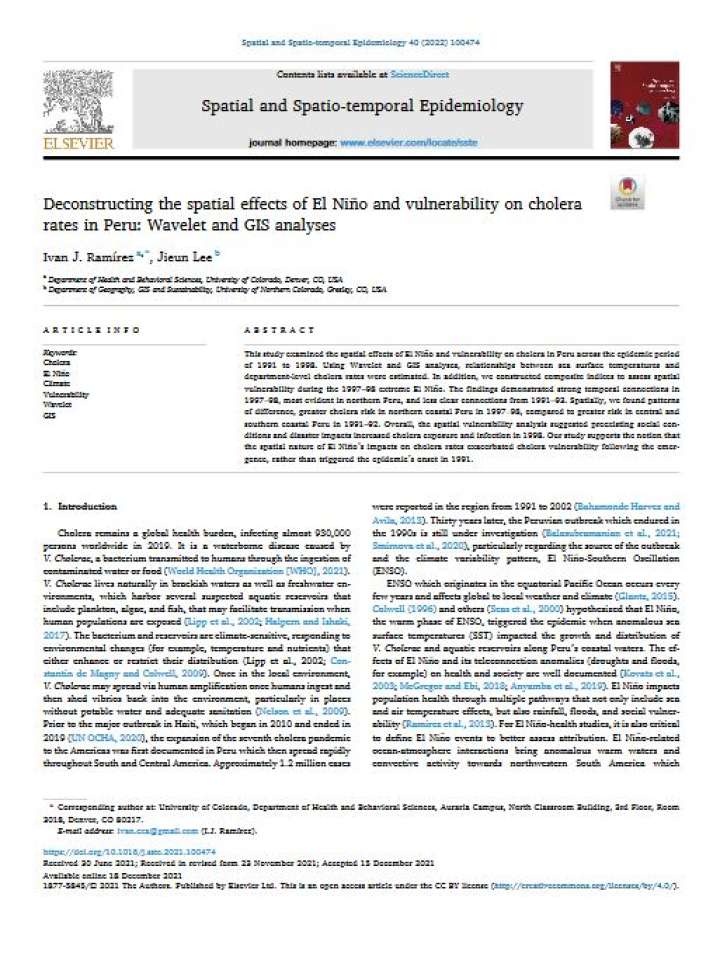Deconstructing the spatial effects of El Niño and vulnerability on cholera rates in Peru: Wavelet and GIS analyses
This retrospective study examined the spatial effects of El Niño and vulnerability on cholera in Peru across the epidemic period of 1991 to 1998. Using Wavelet and GIS analyses, relationships between sea surface temperatures and department-level cholera rates were estimated. In addition, we constructed composite indices to assess spatial vulnerability during the 1997–98 extreme El Niño.
The findings demonstrated strong temporal connections in 1997–98, most evident in northern Peru, and less clear connections from 1991–93. Spatially, we found patterns of difference, greater cholera risk in northern coastal Peru in 1997–98, compared to greater risk in central and southern coastal Peru in 1991–92. Overall, the spatial vulnerability analysis suggested preexisting social conditions and disaster impacts increased cholera exposure and infection in 1998The study supports the notion that the spatial nature of El Niño's impacts on cholera rates exacerbated cholera vulnerability following the emergence, rather than triggered the epidemic's onset in 1991.
Explore further

